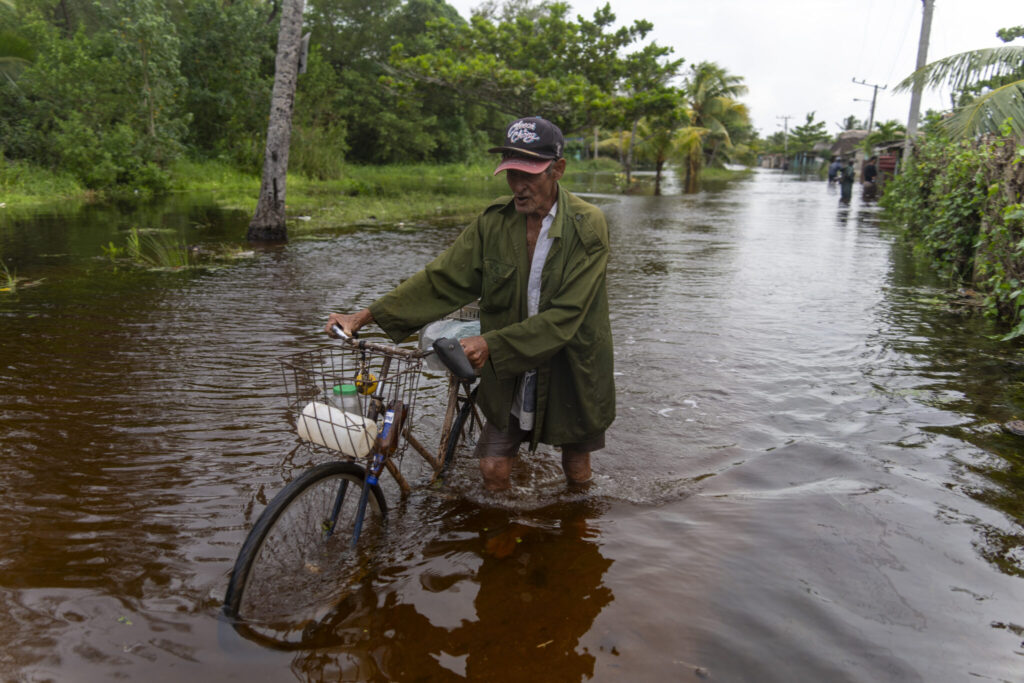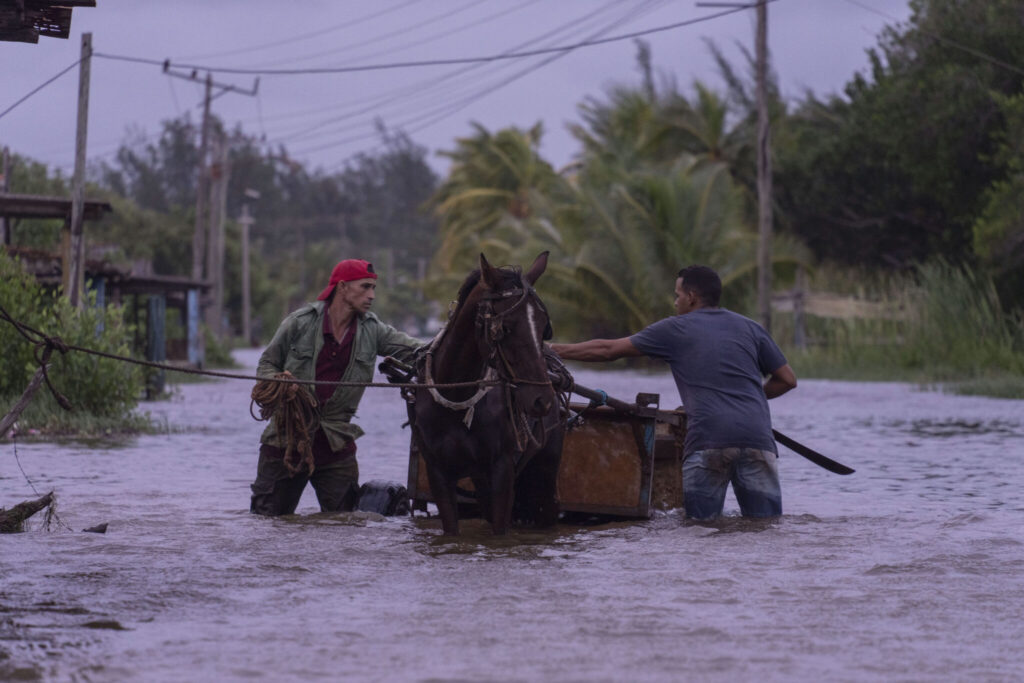Category 2 hurricane Helene/ Helene threatens Florida/ Helene hurricane update/ Newslooks/ FLORIDA/ J. Mansour/ Morning Edition/ Hurricane Helene, now a Category 2 storm, is barreling toward Florida’s northwestern coast, threatening catastrophic storm surges and damaging winds. The storm is expected to strengthen to a Category 3 by landfall, with warnings extending from Florida to the Carolinas. Helene’s fast-moving winds and heavy rain could cause widespread flooding and power outages across the southeastern U.S.

Helene Upgraded to Category 2, Poses Major Threat to Florida: Quick Looks
- Hurricane Helene has been upgraded to a Category 2 storm as it heads toward Florida’s Big Bend region, with the potential to strengthen to Category 3 by Thursday evening.
- The National Weather Service warns of a “catastrophic and unsurvivable” storm surge up to 20 feet in Florida’s Apalachee Bay, urging residents to take evacuation orders seriously.
- Evacuations have been ordered in several Florida counties, and schools and universities have canceled classes along the Gulf Coast.
- Helene’s impact is expected to stretch inland, with damaging winds, power outages, and flash floods likely in Georgia, the Carolinas, and even as far as the Appalachian Mountains.
- The storm has already caused flooding and damage in Mexico’s Yucatan Peninsula and affected parts of Cuba and the Cayman Islands.
- Federal authorities have positioned emergency resources across the region, preparing for widespread damage.
- Tropical Storm Isaac has also formed in the Atlantic, and Tropical Storm John is threatening Mexico’s western coast.
Hurricane Helene Upgraded to Category 2, Threatens Florida
Deep Look:
Hurricane Helene, which has rapidly intensified into a Category 2 storm, is racing across the Gulf of Mexico toward Florida’s northwestern coast. Expected to strengthen to a Category 3 hurricane by Thursday evening, Helene is on course to make landfall in the Big Bend region, where Florida’s panhandle and peninsula meet. With sustained winds of 100 mph and the potential to increase further, the storm presents a significant threat to millions across the southeastern United States.
The National Weather Service has warned of a potentially “unsurvivable” storm surge in Apalachee Bay, where surges could reach as high as 20 feet. In a statement, the service described the forecast as a “nightmare surge scenario” and urged residents in the affected areas to heed mandatory evacuation orders. The storm’s size and speed mean that impacts will be felt far inland, with areas as far north as Georgia and the Carolinas at risk of heavy rains, flash floods, and destructive winds.
Forecasters at the National Hurricane Center emphasized the storm’s vast size, predicting that Helene’s impacts will be widespread, affecting areas hundreds of miles from the coast. “It’s going to have impacts that cover a large area,” said Jack Beven, senior hurricane specialist at the center.
The governors of Florida, Georgia, and the Carolinas have declared states of emergency, activating resources to support evacuation efforts and prepare for the potential aftermath. Federal agencies have also pre-positioned emergency teams with food, water, and generators to help affected communities recover.
As of Thursday morning, Helene was located about 320 miles southwest of Tampa, moving north-northeast at 12 mph. The storm’s fast forward movement will allow strong winds and rains to penetrate deep into the southeastern U.S., including regions like the Appalachian Mountains, where landslides and prolonged power outages are possible. Tropical storm warnings have already been issued as far north as North Carolina, and experts are predicting extensive flooding throughout much of the Southeast.
Helene has already left a trail of damage in its wake, having swamped parts of Mexico’s Yucatan Peninsula earlier this week. The storm’s outer bands flooded streets and toppled trees in Cancun before moving into the Gulf. In Cuba, the government preemptively shut off power in several communities, bracing for waves as high as 16 feet. Similarly, in the Cayman Islands, schools closed, and residents scrambled to protect their homes from flooding.
In Atlanta, residents have been stocking up on essentials in preparation for the storm’s arrival. Charles McComb, a local resident, expressed disbelief that a hurricane could impact a city so far inland but acknowledged the importance of preparing for potential power outages. “It would be really unique for it to hit so far inland,” he said, noting that his area is prone to outages even in less severe weather conditions.
Helene is expected to be one of the largest hurricanes to impact the region in years. According to Phil Klotzbach, a hurricane researcher at Colorado State University, Helene’s predicted size is exceeded only by a few Gulf hurricanes since 1988, including Irma in 2017, Wilma in 2005, and Opal in 1995.
More than half of Georgia’s public school districts and several universities in the state have already canceled classes in anticipation of the storm’s impact. For Atlanta, Helene could be the worst hurricane strike in over three decades, according to Marshall Shepherd, a meteorology professor at the University of Georgia.
While Helene is the eighth named storm of the 2024 Atlantic hurricane season, it is not the only storm currently threatening the region. Tropical Storm Isaac formed in the Atlantic on Wednesday, and forecasters warn that it could strengthen into a hurricane by the weekend. Isaac’s projected path could affect parts of Bermuda and the Azores in the coming days. Meanwhile, in the Pacific, Tropical Storm John has reformed and is threatening Mexico’s western coast after causing mudslides and fatalities earlier this week.
With Hurricane Helene nearing the U.S. mainland and other storms brewing in the Atlantic and Pacific, emergency services are on high alert. As residents brace for the impact, authorities are urging everyone in the storm’s path to take evacuation orders seriously and prepare for the potential devastation.







